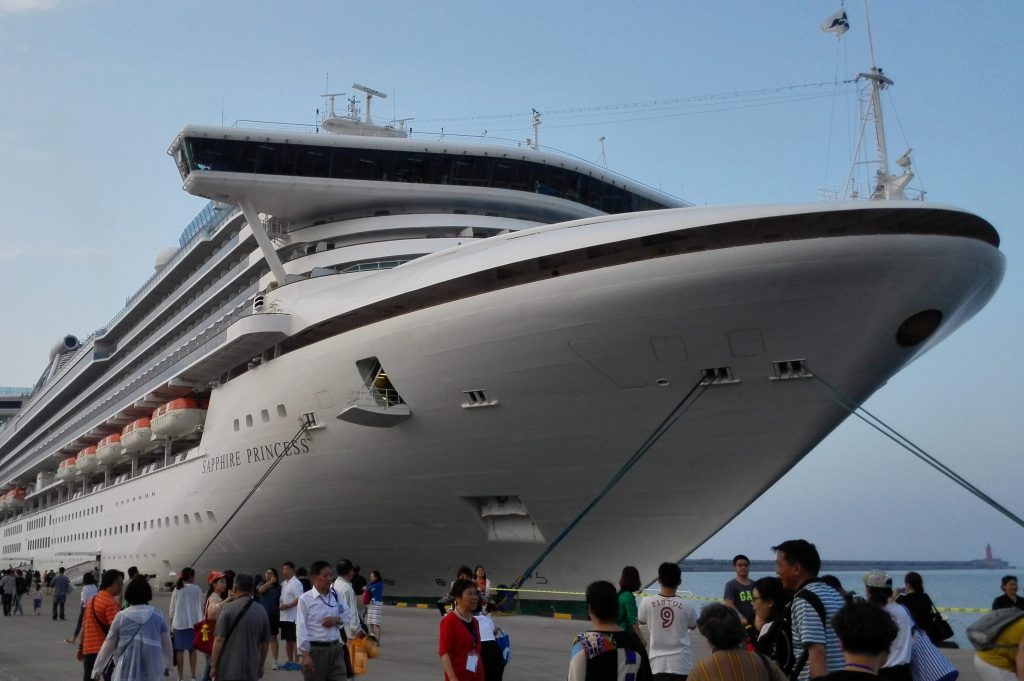Skift Take
Carnival Corp. reminds us that China is a small part of its business — which is true. But if the market is going to become the world's largest as the company expects, there are a lot of complications to work through.
The China cruise market continued to disappoint Carnival Corporation in the second fiscal quarter, but the operator isn’t giving up.
While the company has decided to scale back its presence in China slightly in 2018 after big increases in the last couple of years, CEO Arnold Donald told analysts Thursday during an earnings call that he expects more ships to head to the region in the coming years.
“China, long term, is going to be a huge market,” he said — though it remains a small part of the company’s business.
And for now, it’s a drag.
Ticket prices were up in the Caribbean and Europe for the quarter that ended May 31, but China cruises saw a decrease, chief financial officer David Bernstein said.
That was hardly a surprise. Industry capacity has seen big growth over the last few years in China, and that has put a pressure on the prices sailings can command. Travel agencies typically charter entire ships or chunks of staterooms and then re-sell them to consumers. Donald described the arrangement as a business-to-business model.
On top of the heightened competition among cruise companies, a dispute that has resulted in Chinese citizens not being allowed to visit South Korea means some of the most popular port stops for cruises leaving China had to be canceled.
“The fact that Chinese are not currently traveling to Korea, we believe, aggravated a situation there in terms of yield and bookings and what have you,” Donald said. “Honestly at this point, because it is a [business-to-business] market, there’s negotiations between the trade and cruise companies like ourselves. We believe it had an impact. At this point, we can’t concretely say Korea produced any of that, but we suspect it did.”
Despite the current events, Donald said the company is excited to bring a new purpose-built ship into China soon. Majestic Princess, which was designed with Chinese passengers in mind, will be officially named in a ceremony in July and will sail from Shanghai.
Earlier this year, Carnival’s Princess Cruises announced that the ship would not sail year-round from China as originally intended but would be based in Australia from late 2018 until early 2019.
Donald said the company believes the ship can be used to attract Chinese travelers to take cruises in Australia. And he said, using the word “hopefully” more than once, that the reduction in capacity in China could help bolster pricing.
“Hopefully the fact that there’s less capacity next year will create the opportunity for yield improvement in China hopefully,” he said. “But you can’t even guarantee that, because it’s still a B2B business. This isn’t actually selling to consumers where consumers are saying, ‘Oh, if you’d drop the price, I would cruise more.’ It’s really a business-to-business transaction still at this stage.”
China aside, the quarter brought mostly good news. Revenues increased to $3.9 billion from $3.7 billion the year before. Profits fell from $605 million in 2016 to $379 million this year, but that was largely due to significant unrealized gains on fuel derivatives last year. Adjusted net income, which excluded those gains, increased from $370 million in 2016 to $378 million this year.
Shares closed Thursday at $65.69, down less than a percent. Carnival is the world’s largest cruise company with nine cruise lines including Carnival Cruise Line, Princess Cruises, Seabourn, Holland America Line, Costa Cruises, and P&O Cruises.
Analysts also had a chance to ask Donald about future plans in Cuba given the stricter policy on travel to the island announced last week by President Donald Trump. The U.S. will allow cruises to continue, but plans to restrict Americans from doing business with hotels and attractions that are tied to the Cuban military. Carnival Cruise Line will join the lineup of brands visiting the island soon.
Asked how the company was thinking about potential long-term investments in Cuba, Donald said Carnival wants to be involved — whenever the law allows.
The cruise industry “is disrupted in terms of making investments in ports and whatnot. Not sure we have the freedom to do that under the current regulations,” Donald said. “As you look at it long term, of course we — as things evolve — when we are able to invest, we would look forward to co-investments with Cuba or investing directly if they allow that to develop ports.”
The Daily Newsletter
Our daily coverage of the global travel industry. Written by editors and analysts from across Skift’s brands.
Have a confidential tip for Skift? Get in touch
Tags: carnival corporation, cruising, earnings
Photo credit: Sapphire Princess is shown in China. Parent company Carnival Corp. said business in China is still struggling, but prospects for the long term are good. Carnival Corp.
